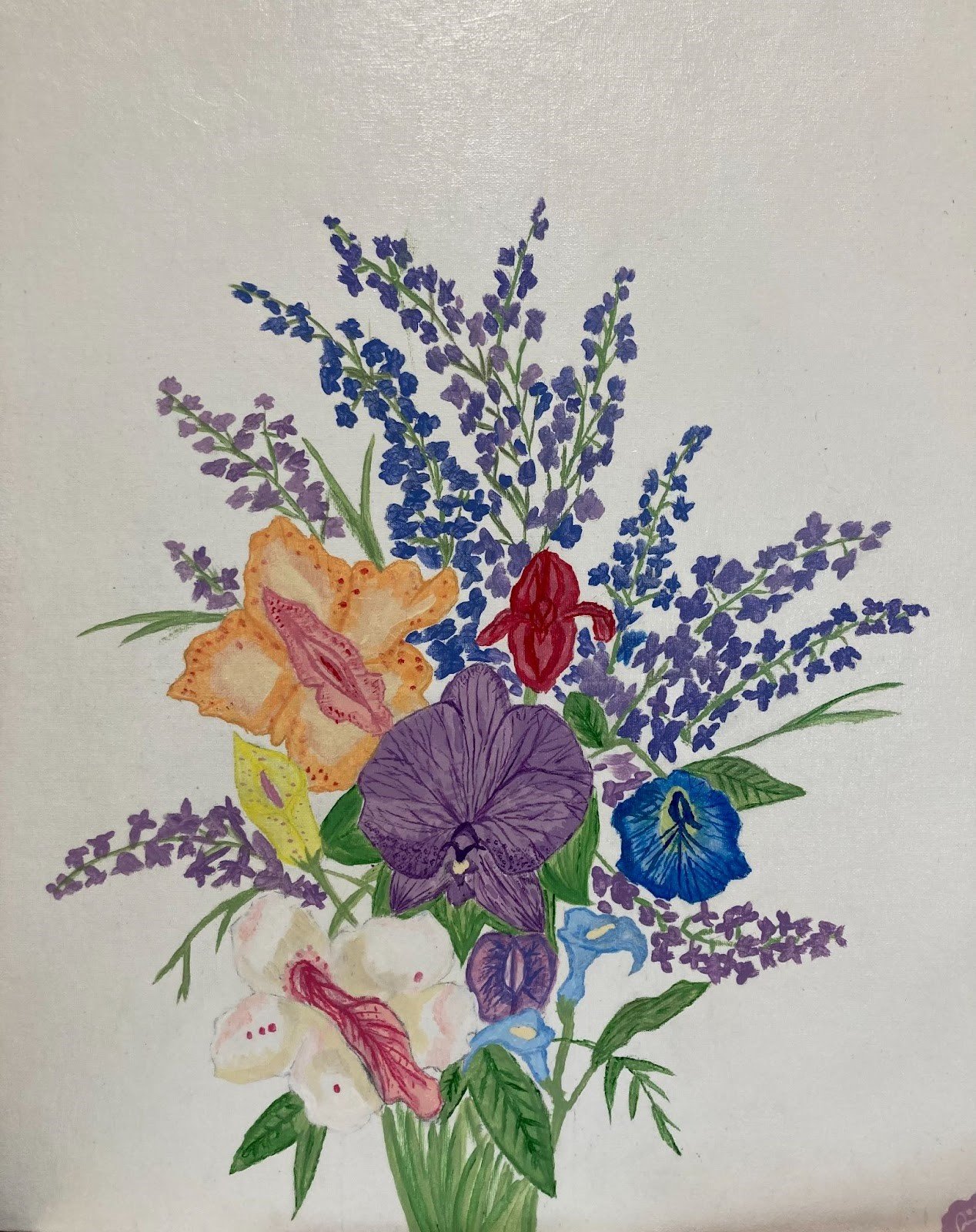Intersectionality & Sexual Health
Written and researched by Tomei Kuehl.
Accompanying artworks selected in partnership with Talia Cardin, youth facilitator to the Youth Sexual Health Program Board.
Blossoming Womanhood
by Desire Morales, a student at AUL Denver
“I decided to use the bouquet of flowers concept because a bouquet is an assortment of different flowers. I wanted to bring attention to the fact that there are different types of vaginas and they are all beautiful!”
Intersectionality:
“Intersectionality is simply about how certain aspects of who you are will increase your access to the good things or your exposure to the bad things in life….It’s basically a lens, a prism, for seeing the way in which various forms of inequality often operate together and exacerbate each other.”
– Kimberlé Crenshaw, shared in an interview with Time Magazine
An intersectional understanding and approach to sex education is imperative because our intersectional identities require something different and unique for each of us. Issues relevant today such as decreased funding for public education, limitations on sexual health and reproductive rights, the threat of sexual assault on college and university campuses, the disproportionate impact of HIV on young people of color, and anti-transgender legislation are all related to sexuality education and cannot be equitably challenged without an understanding of the complex interplay across social hierarchies and identities (Garcia & Fields, 2017).
Loretta Ross, an African American academic, feminist, and activist for reproductive justice, sums this up stating, “a key criterion for reproductive justice is realizing that no individual can make reproductive decisions outside of the context in which they’re embedded….I watched the Indigenous woman shift the lens and redefine reproductive justice incorporating sovereignty in a way that wouldn’t have occurred to or was not needed by Black women. I watched Latinas shift it and incorporate a struggle against immigration rights that again would not have occurred to Black women. I watched white women re-center it and talk about critical white feminism as a way of resisting white supremacy among white women.” There is room for all of us and we need one another to understand our unique needs based on our intersecting identities.
Untitled Artwork
by Julissa Blancas, a student at AUL Denver
“The meaning behind my painting is describing how people throw around the word love. A lot of people are not comfortable telling someone right away ‘I love you’ and some people are. I’m one of those type of people that don’t really like telling people ‘I love you’ for personal reasons but when you try describing it to someone they don’t understand you and just tell you it’s a word just accept it and just say it back but deep down you can’t so I wanted to confined a heart describing love and the flowers coming out of it describe many emotions.”
Smearing Paint
by Nora (She/Her) from Inside Out Youth Services
“When it came to sex education, my dad had decided to take me out of health class to teach me these things himself, believing the school’s education would not be appropriate. My sex education came down to abstinence-only which took years to break out of that concept. Not only that but being a trans woman taught me that my body was abnormal and even demonic to some, so when it comes to self-portraits I decided to embrace this in a positive way and began drawing myself as a beautiful many eyed demon. I also drew art of a character from my comic named Vivi, she is a trans woman as well and embraces her sexuality and desires, in a way she was my own version of the confidence I wished to work towards.”
-
“She Coined the Term ‘Intersectionality’ Over 30 Years Ago. Here’s What It Means to Her Today” by Katy Steinmetz for TIME magazine
Garcia, Lorena & Fields, Jessica (2017). Renewed commitments in a time of vigilance: sexuality education in the USA, Sex Education, 17:4, 471-481, DOI: 10.1080/14681811.2017.1285387


